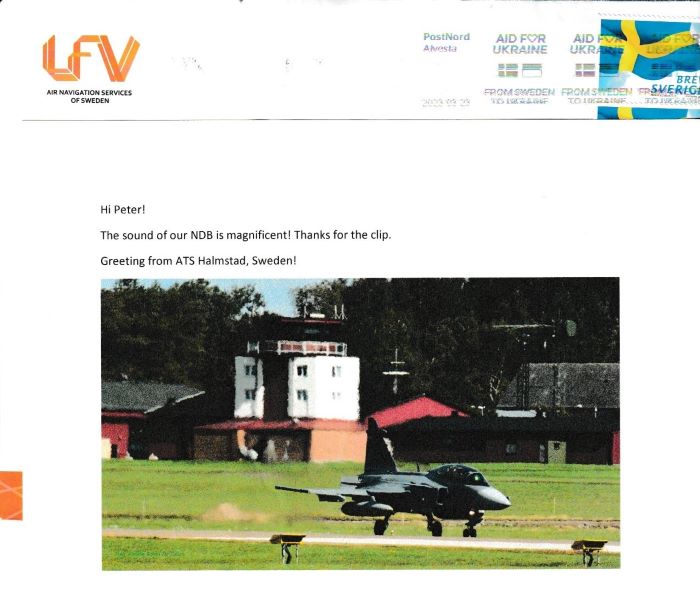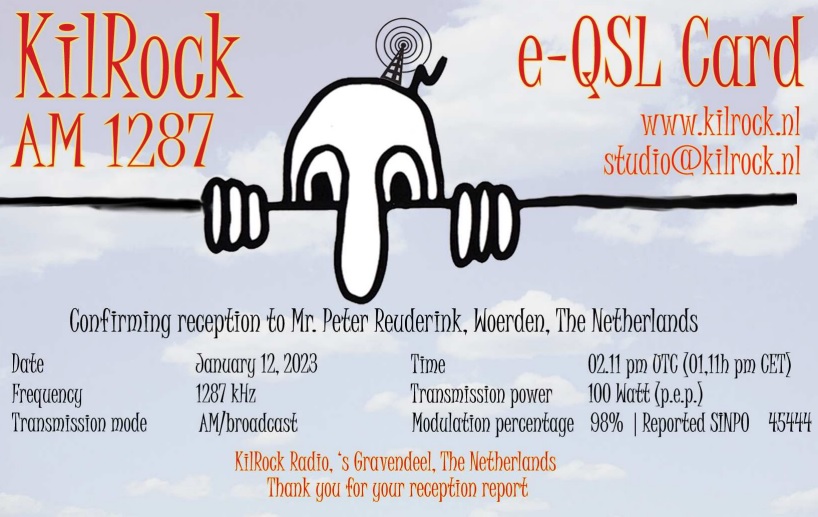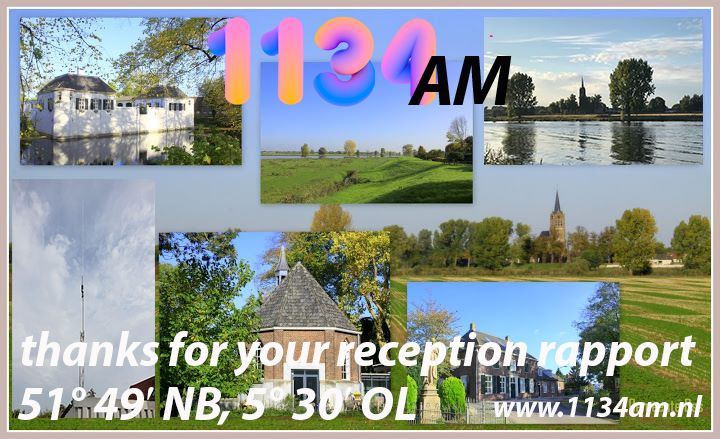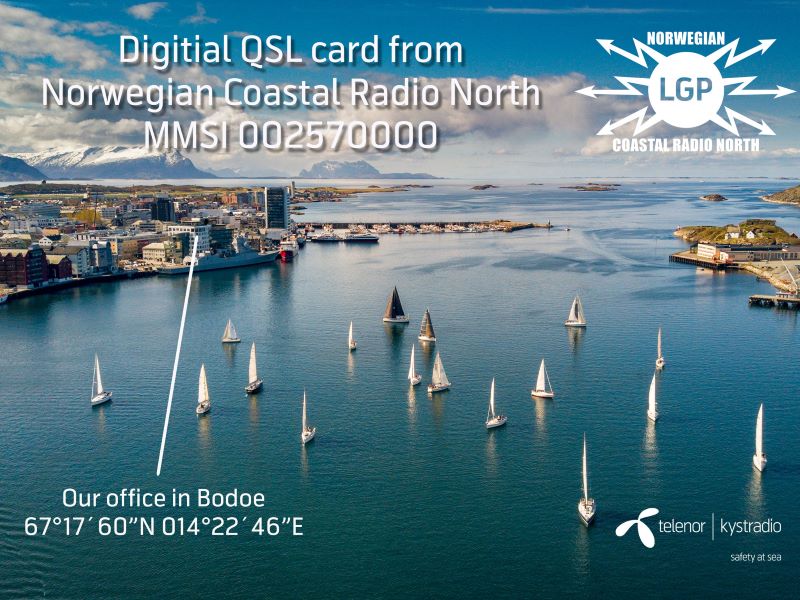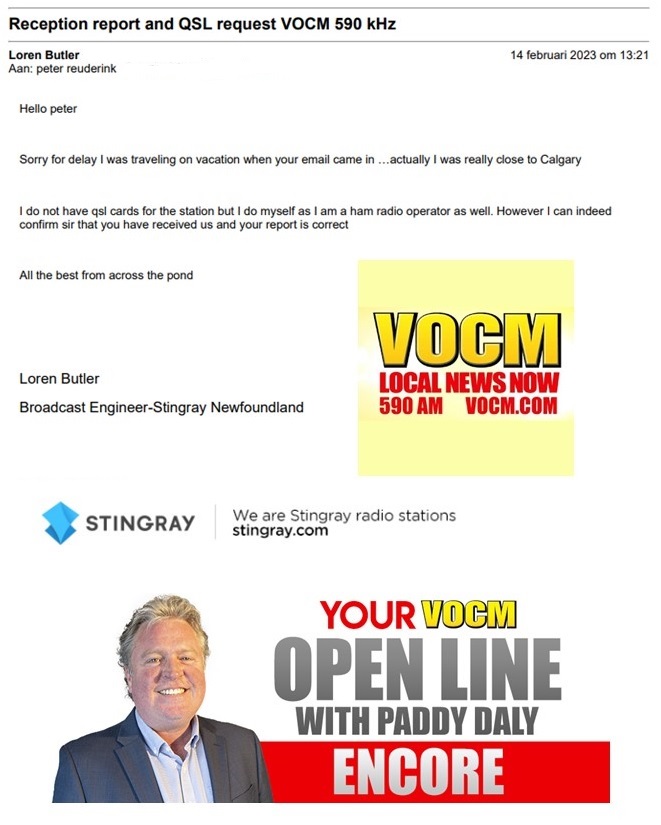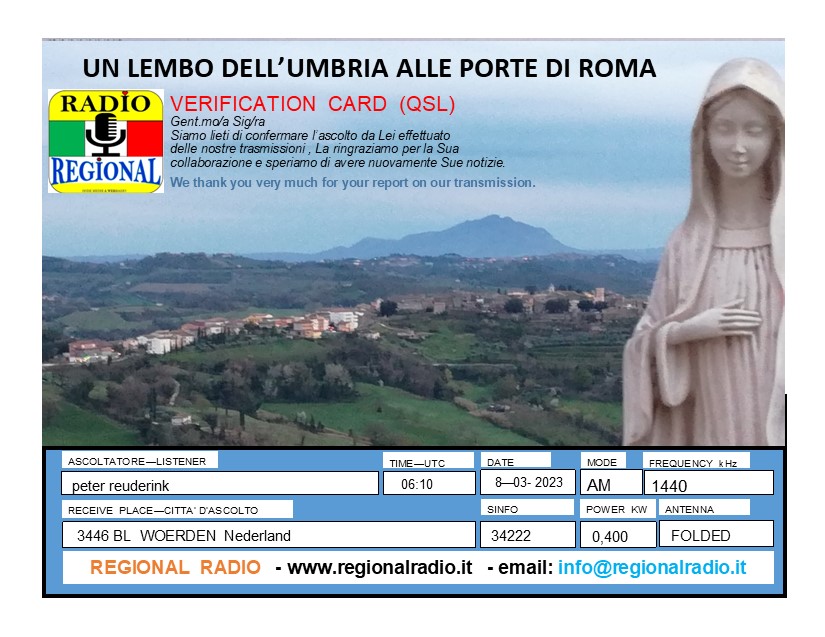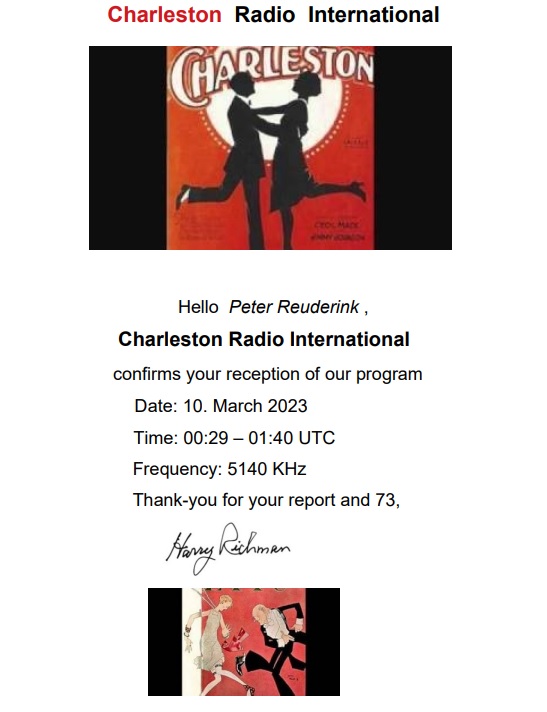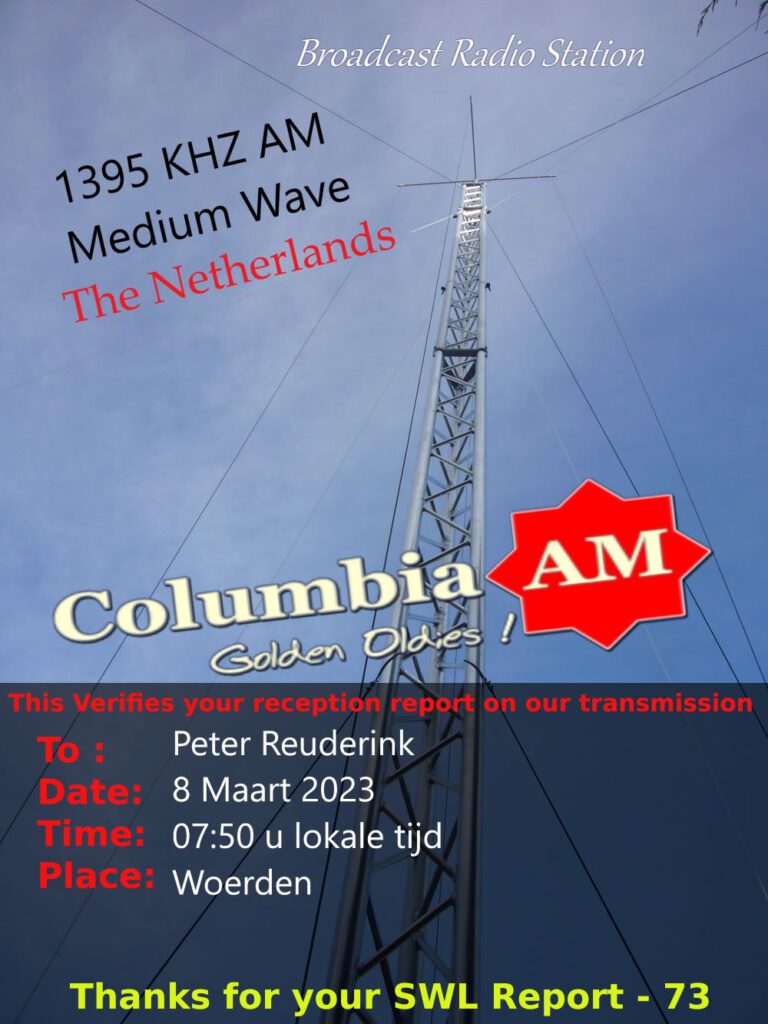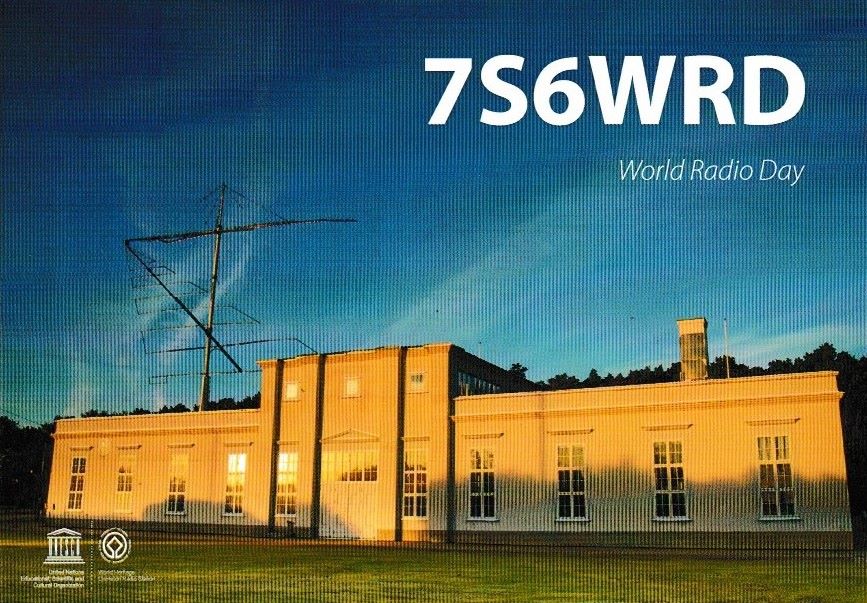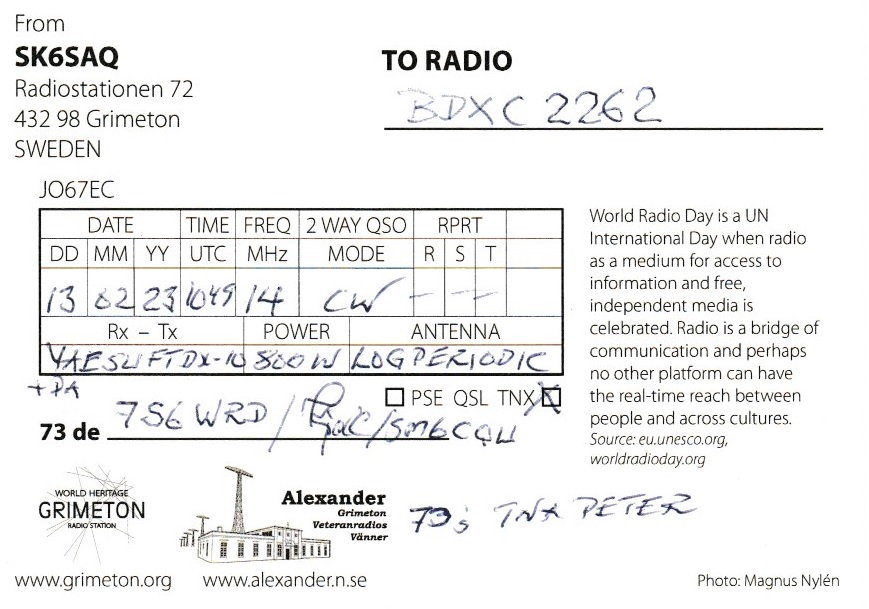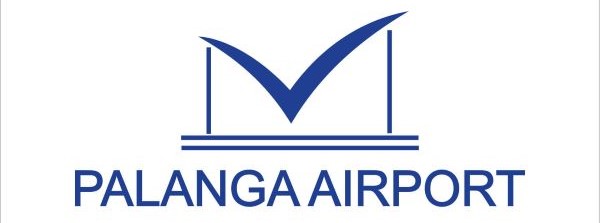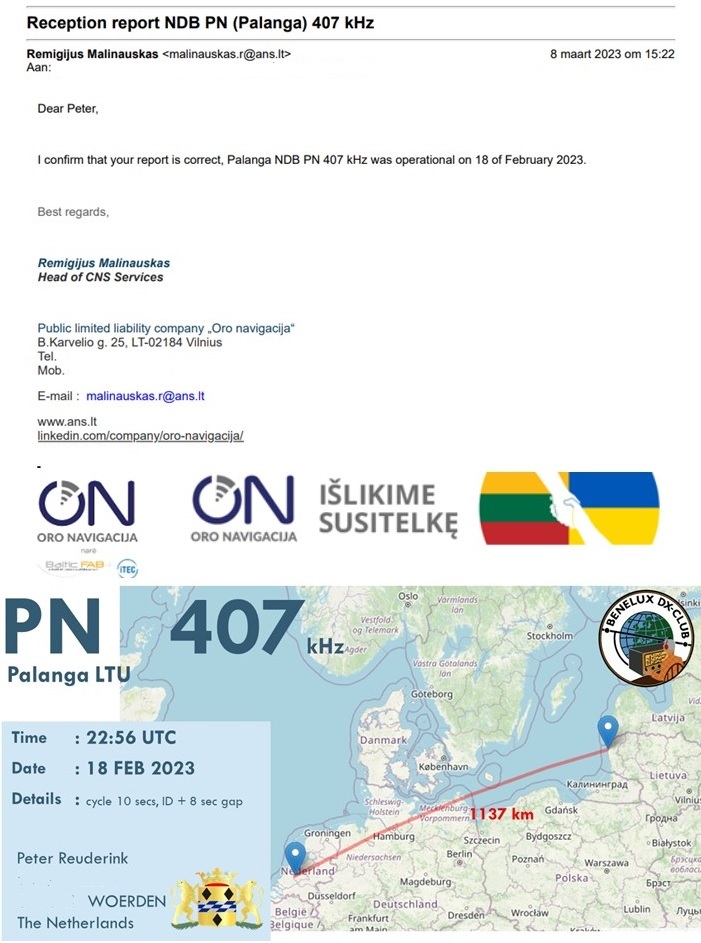
The NDB MF in Halmstad on 421 kHz is located in south Sweden. A NDB, or Non Directional Beacon, is used for navigational purposes. Typically they are fairly low power. This one is about 725 km in NE direction from my QTH.
I sent a report plus audio clip and self-made QSL card to ats.halmstad@lfv.se. To my surprise I got a reply by regular mail, which is always nice.
Halmstad served as an air force base until 1961. Today it is a municipal airport with 800-1300 aircraft movements per year. It still supports the military operations from Halmstad as you can see on the QSL. And of course the jet fighter shown is a Swedish built SAAB Gripen!
